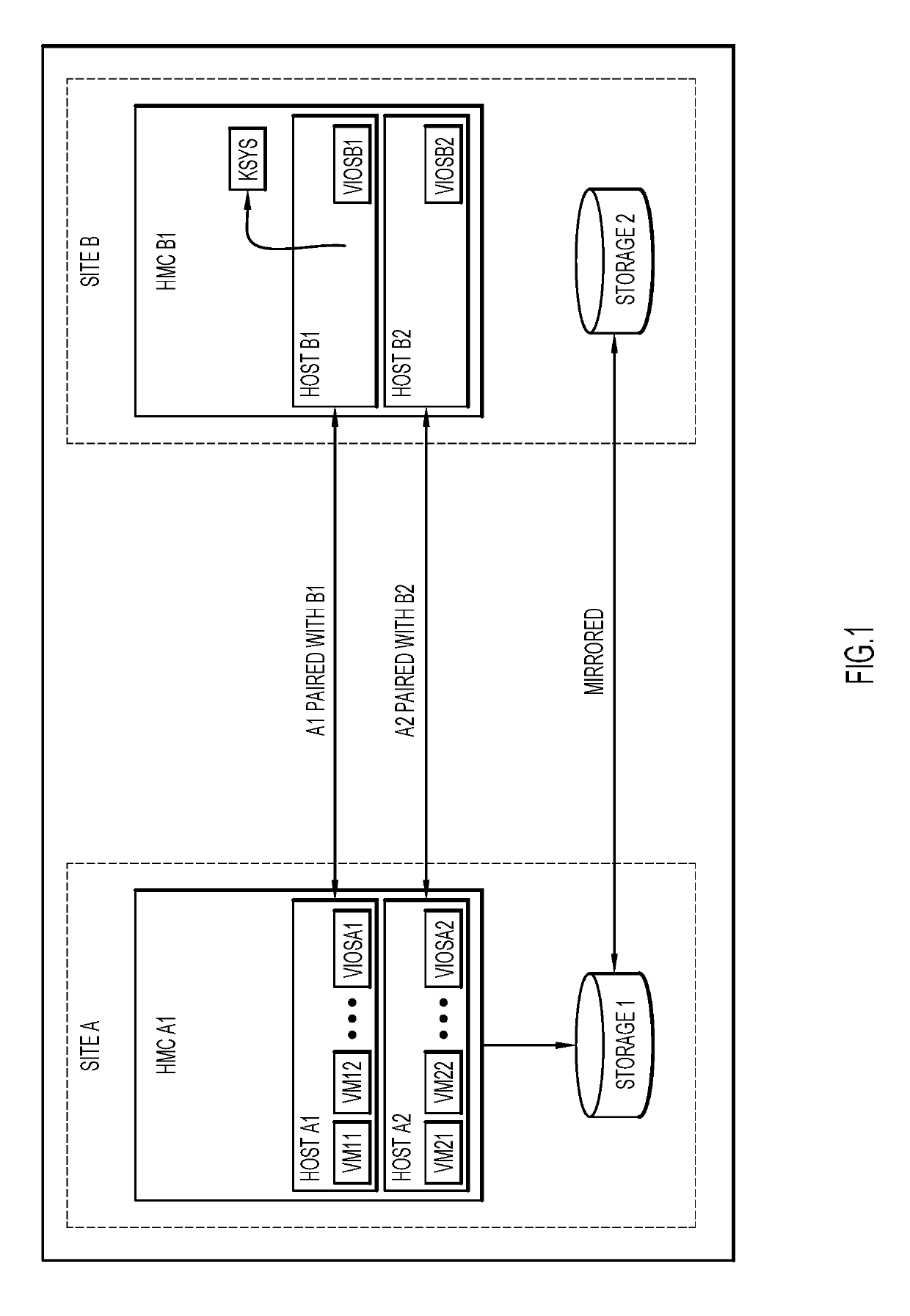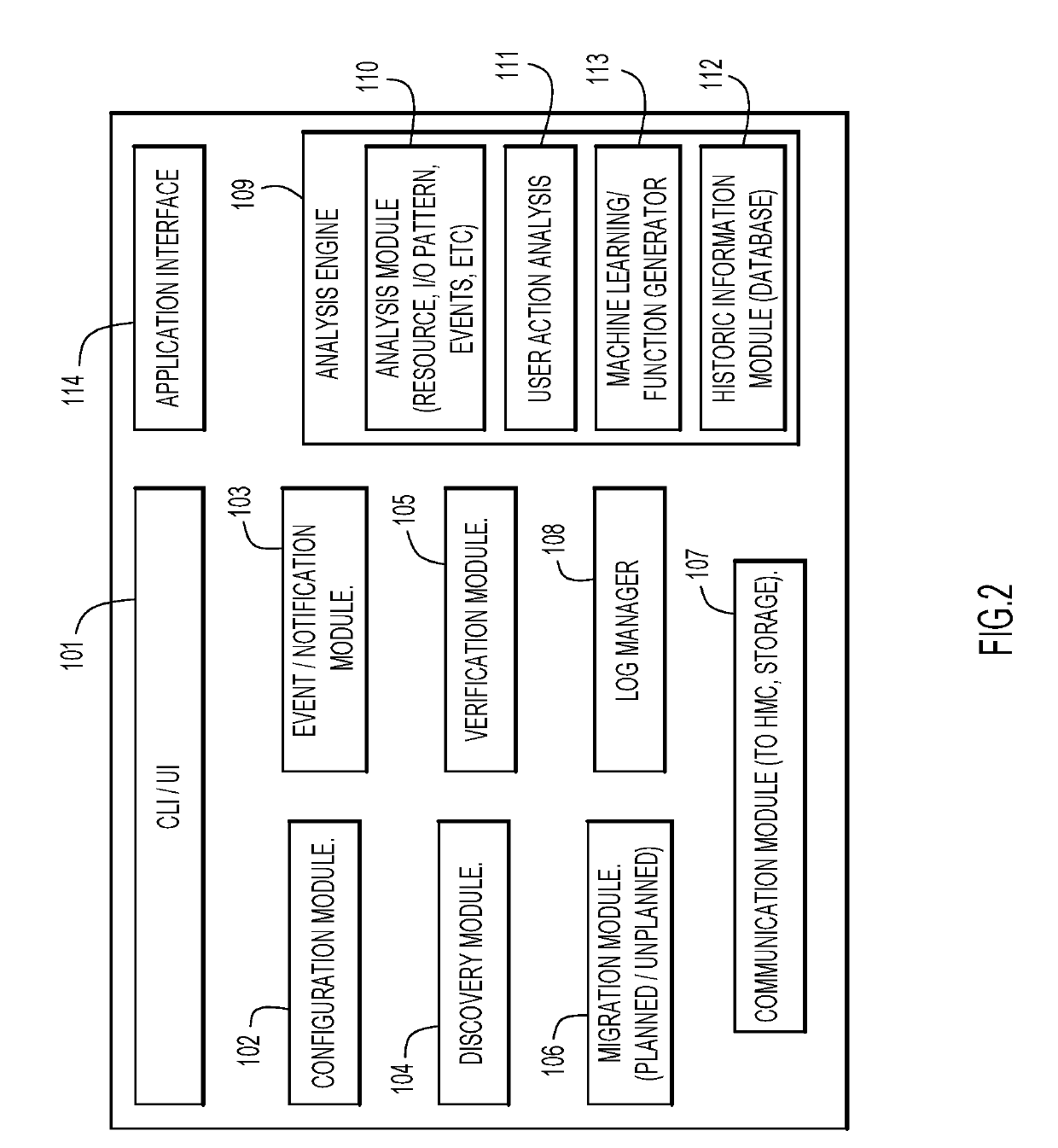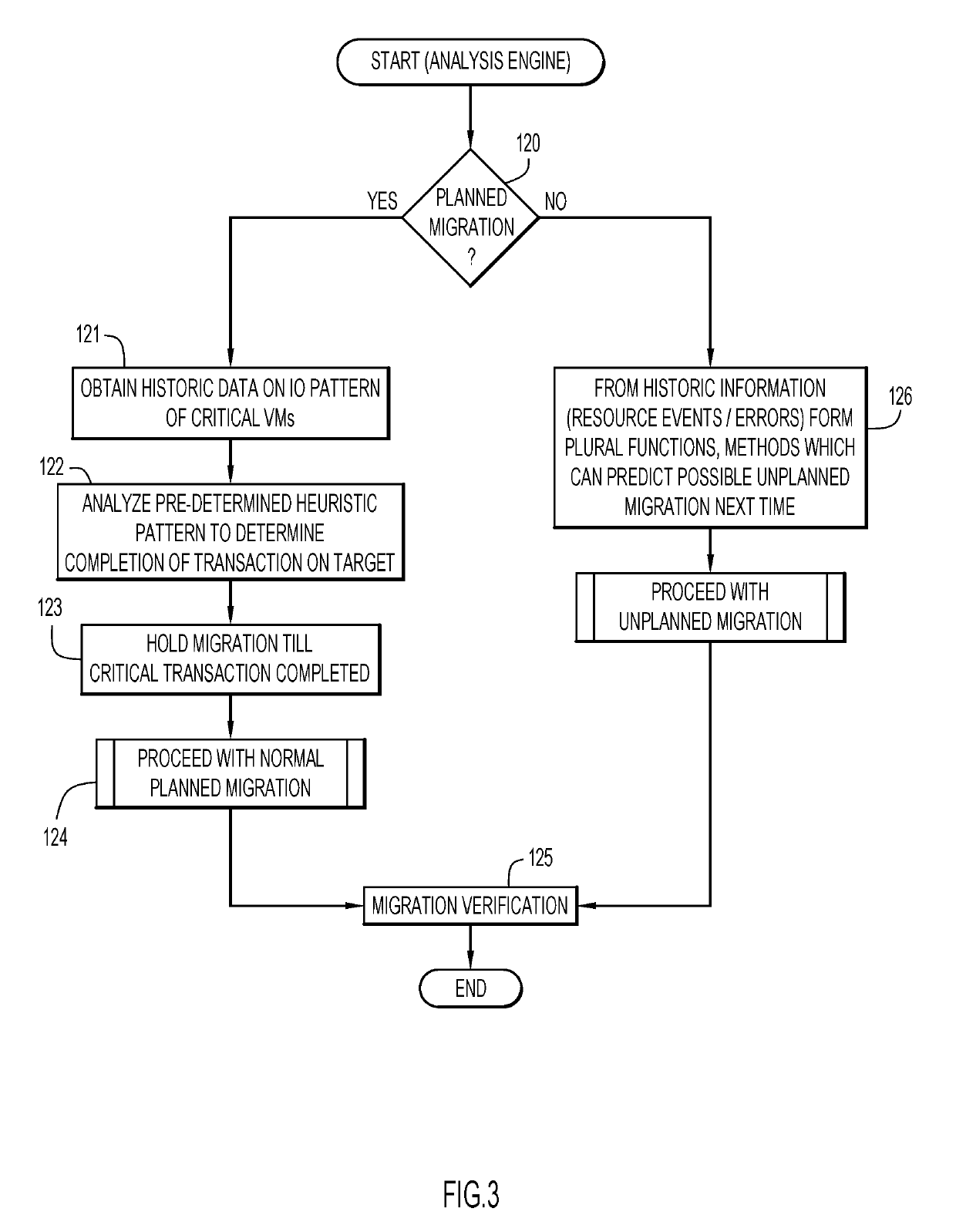Traffic and geography based cognitive disaster recovery
a cognitive disaster recovery and traffic-based technology, applied in the field of data disaster recovery, can solve the problems of poor rto, underutilized disaster recovery configuration, and gradual failure of primary sites
- Summary
- Abstract
- Description
- Claims
- Application Information
AI Technical Summary
Benefits of technology
Problems solved by technology
Method used
Image
Examples
Embodiment Construction
[0019]Reference is now made to FIGS. 1-3 which illustrate a first example of a cognitive rolling disaster recovery solution comprising an orchestrator node or control system KSYS in which a manager application functions. In FIG. 1 the control system KSYS is shown managing two data sites A and B which are logical entities and may be comprised of hardware management consoles (HMC A1 and HMC B1), hosts (Host A1, Host A2, Host B1 and Host B2), virtual I / O servers (VIOSA1, VIOSA2. VIOSB1 and VIOSB2), and virtual machines (VM11, VM12, VM21, VM22) as its resources. The hosts at a primary site are paired with the hosts of a target site such that, for planned or unplanned disaster recovery procedures, the VMs belonging to the primary host will be brought up on the paired host at the target site.
[0020]The embodiment includes various modules as shown in FIG. 2. A user can specify the site (e.g., site A), HMC, host and the paired host information using interface 101 (a user interface UI or comm...
PUM
 Login to View More
Login to View More Abstract
Description
Claims
Application Information
 Login to View More
Login to View More - R&D
- Intellectual Property
- Life Sciences
- Materials
- Tech Scout
- Unparalleled Data Quality
- Higher Quality Content
- 60% Fewer Hallucinations
Browse by: Latest US Patents, China's latest patents, Technical Efficacy Thesaurus, Application Domain, Technology Topic, Popular Technical Reports.
© 2025 PatSnap. All rights reserved.Legal|Privacy policy|Modern Slavery Act Transparency Statement|Sitemap|About US| Contact US: help@patsnap.com



